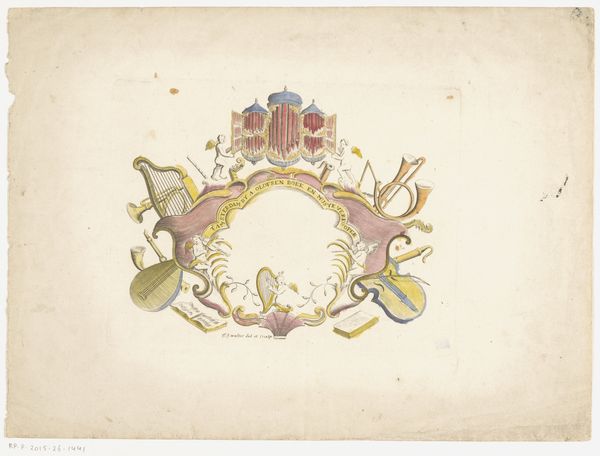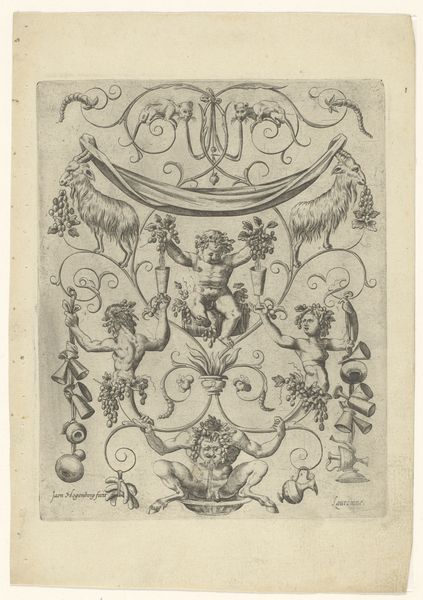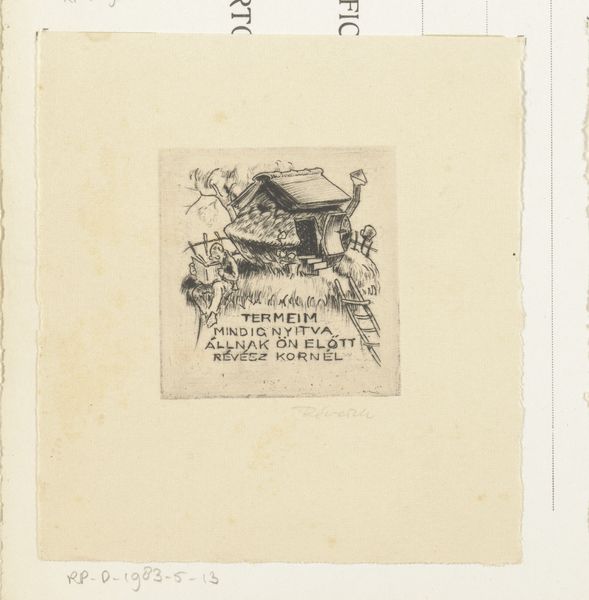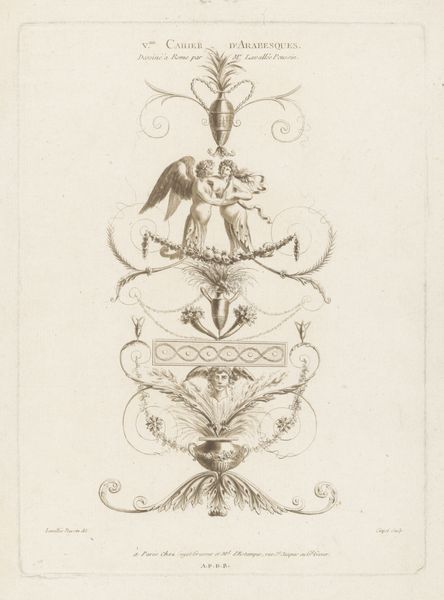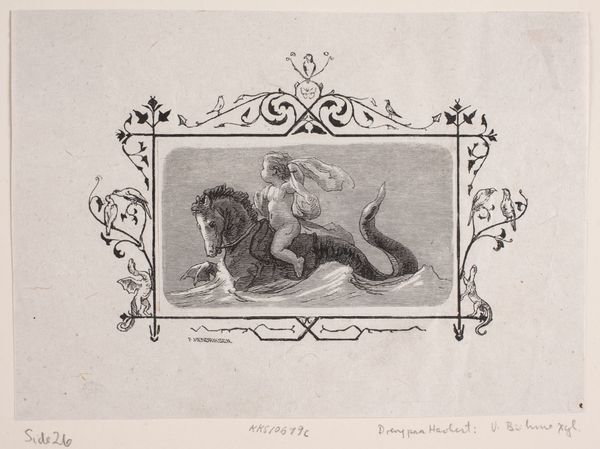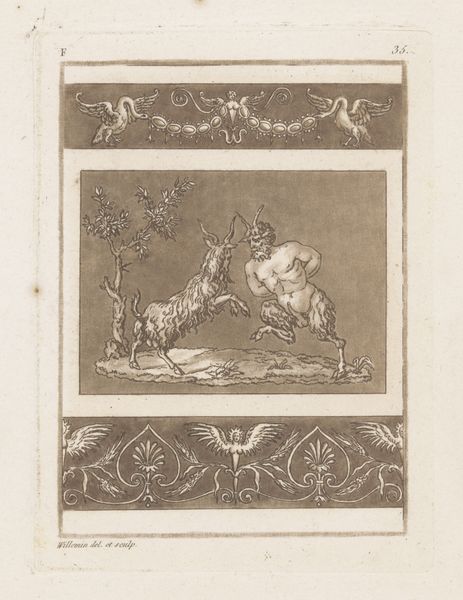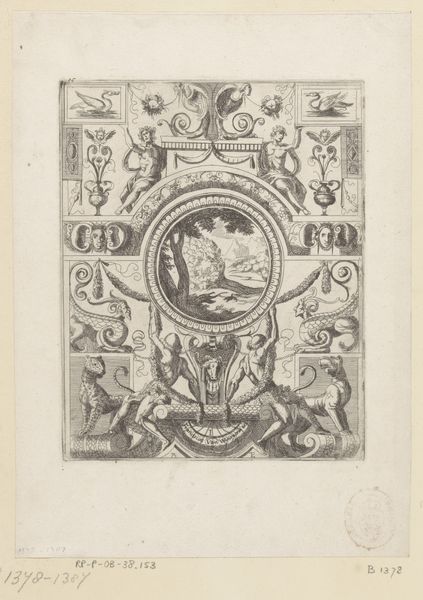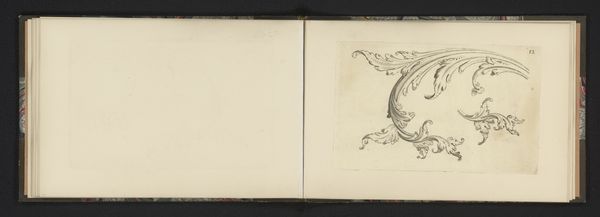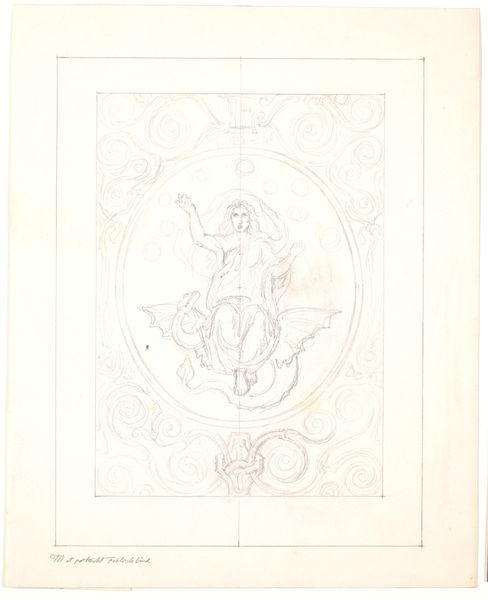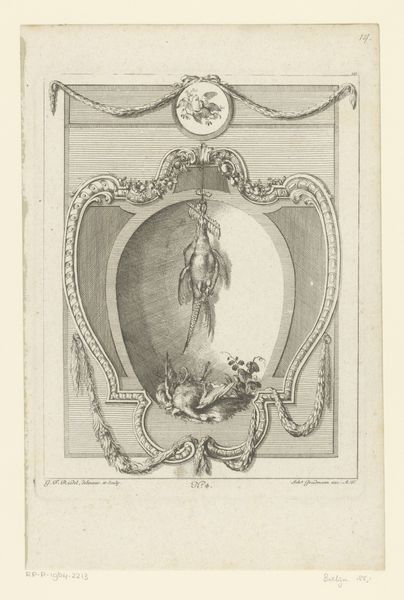
drawing, watercolor
#
drawing
#
allegory
#
caricature
#
figuration
#
watercolor
#
symbolism
#
watercolour illustration
Dimensions: height 240 mm, width 220 mm
Copyright: Rijks Museum: Open Domain
Curator: Here we have "Ontwerp voor borduurwerk met de evangelist Lucas", a watercolor drawing from around 1850 to 1875 by Hardman & Co. What strikes you first about it? Editor: The creature itself, a sort of winged bull, it has a rather fierce look. The combination of animalistic strength and angelic wings is visually quite powerful and unexpected, though. Curator: The winged bull is indeed symbolic. It represents Saint Luke, one of the four Evangelists. In Christian iconography, each Evangelist has an animal symbol, and Luke’s is the ox or bull, signifying sacrifice and service. Hardman & Co. specialized in church decoration, so such imagery was standard for them. Editor: So, it's essentially a visual shorthand, deeply embedded in religious and artistic tradition. But beyond the religious context, the bull-with-wings feels almost like a figure from mythology, a guardian. Is the halo a reference to sanctity here? Curator: Undoubtedly. The halo identifies him as a holy figure, setting him apart. What’s interesting is the planned function: embroidery. The image would gain a new dimension once stitched in thread. It moves the image from a planned space into use and function in an entirely different sphere. Editor: Absolutely, from a two-dimensional drawing to a tangible, textural object. This was obviously destined for a specific location, meant to communicate complex theological ideas to a wider audience, beyond just the literate. I’m intrigued by the symbolism intersecting the practical application. Curator: I agree. It makes me wonder about the social implications of religious art during this period, how the Church disseminated such symbols, and what political role these objects played in a rapidly changing world. Editor: Well, considering the era, this imagery must have carried considerable weight and emotional resonance. It acted as a potent reminder of spiritual and cultural values in a world undergoing industrial transformation. Thank you, this has been thought provoking.
Comments
No comments
Be the first to comment and join the conversation on the ultimate creative platform.
